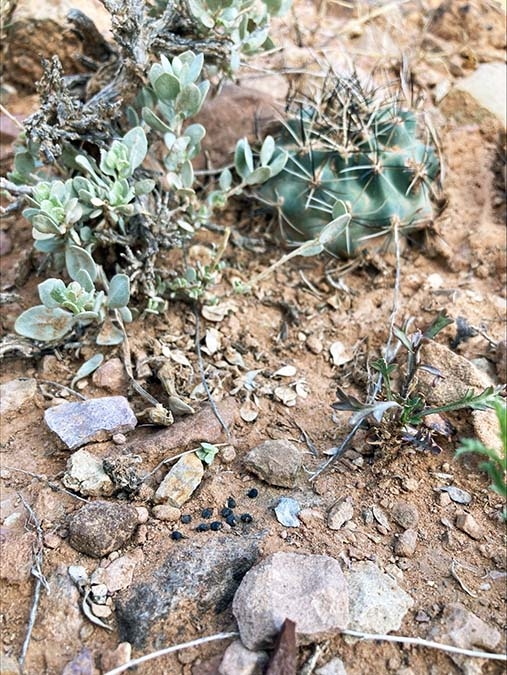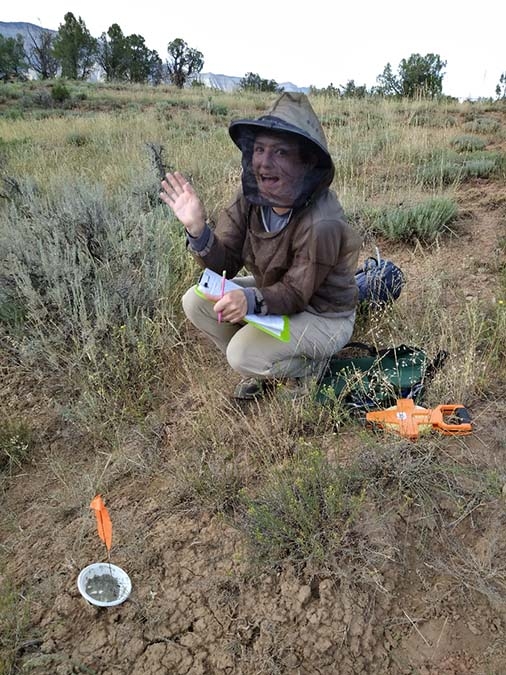Cactus on the Move
Little is known about how Sclerocactus species spread their seed. This is a question we would like to answer because Sclerocactus glaucus has been recommended for delisting from the Endangered Species Act. In the near-term, Sclerocactus glaucus populations are stable with existing and ongoing protections from the Bureau of Land Management but over the longer term, suitable habitat is predicted to shift due to climate change. It is important to know if Sclerocactus glaucus will be able to track suitable habitat through seed dispersal.
We assume that Sclerocactus seed are primarily dispersed by water and gravity. The majority of hundreds of seed produced by an individual will fall near the parent plant but could be washed away during a spring storm. In fact, in 2021 we found high concentrations of Sclerocactus seed in the soil close to reproductive individuals and few seed as we looked just one meter away. Longer dispersal is possible through the movement of seed by animals.
There is little information on animal dispersal of Sclerocactus species, however ants are known to disperse seeds of other cacti. Sclerocactus seed contain a fatty growth that can attract ants, but we weren’t sure if ants dispersed Sclerocactus seed until we documented ants moving the seed in the summers of 2021 and 2022. This led us to study the impact of ant species diversity and nest abundance on seed dispersal.

A "seed depot" used to study the dispersal of seed by ants.

Megan Clark documenting ant nest diversity and abundance.
Climate change and seed dispersal not only impacts Sclerocactus species but all species in the sagebrush steppe plant communities where Sclerocactus glaucus is found. Climate change will cause shifts in species composition as seed of different species reach a habitat and enter the soil seed bank. Species that survive as seed in the soil will be the ones to germinate after droughts, fire or land disturbance.
A change in species composition means different interactions among plant species that could impact the persistence of the cactus populations. For example, cheatgrass can invade populations and suppress cactus germination and survival. This longer-term concern has led us to study the potential for changes in S. glaucus communities by examining differences of species observed in current communities compared to species found in the soil seed bank.
While the diversity of species growing in northern populations is slightly higher than southern populations, species diversity in the soil seed bank of northern populations is nearly double that of southern populations. This could mean more dramatic changes in these communities due to climate change.
We will continue to monitor populations of this cactus looking for any threats to the stability of populations in the near term while answering questions that will help us conserve this species in the long term.
Add new comment